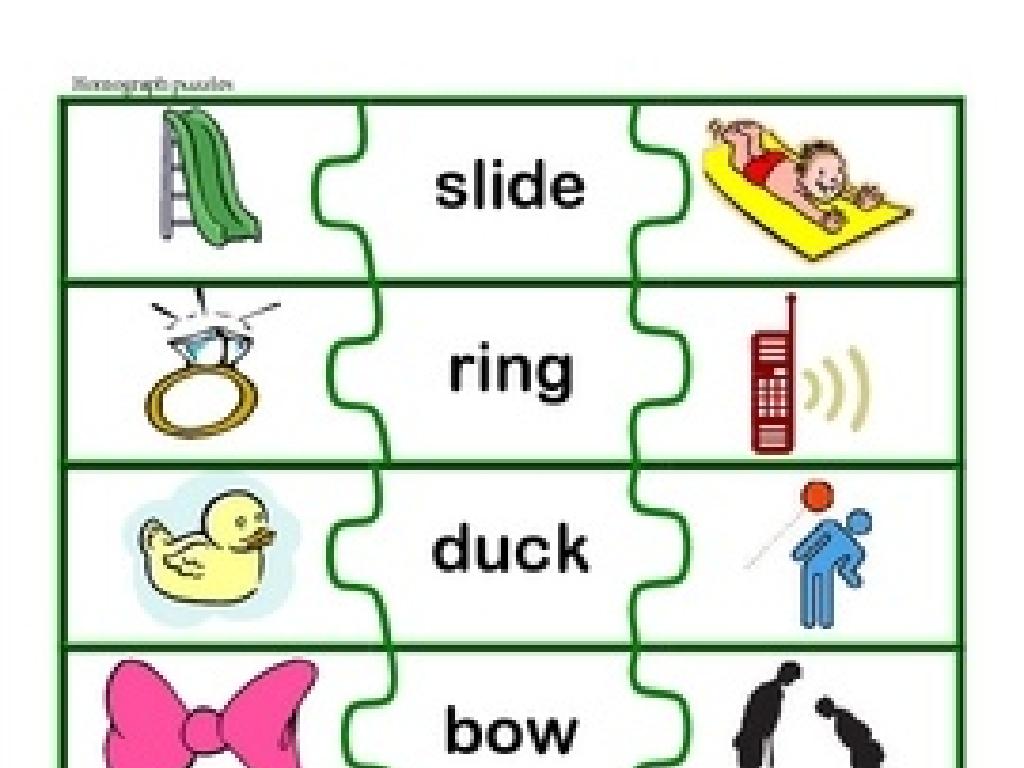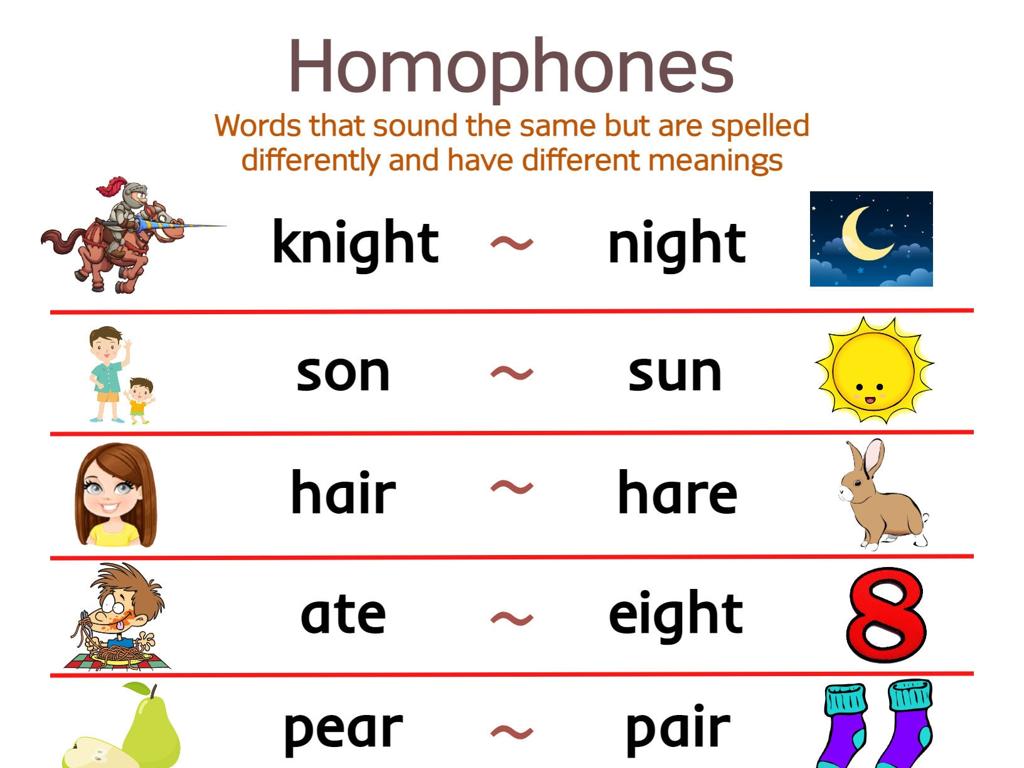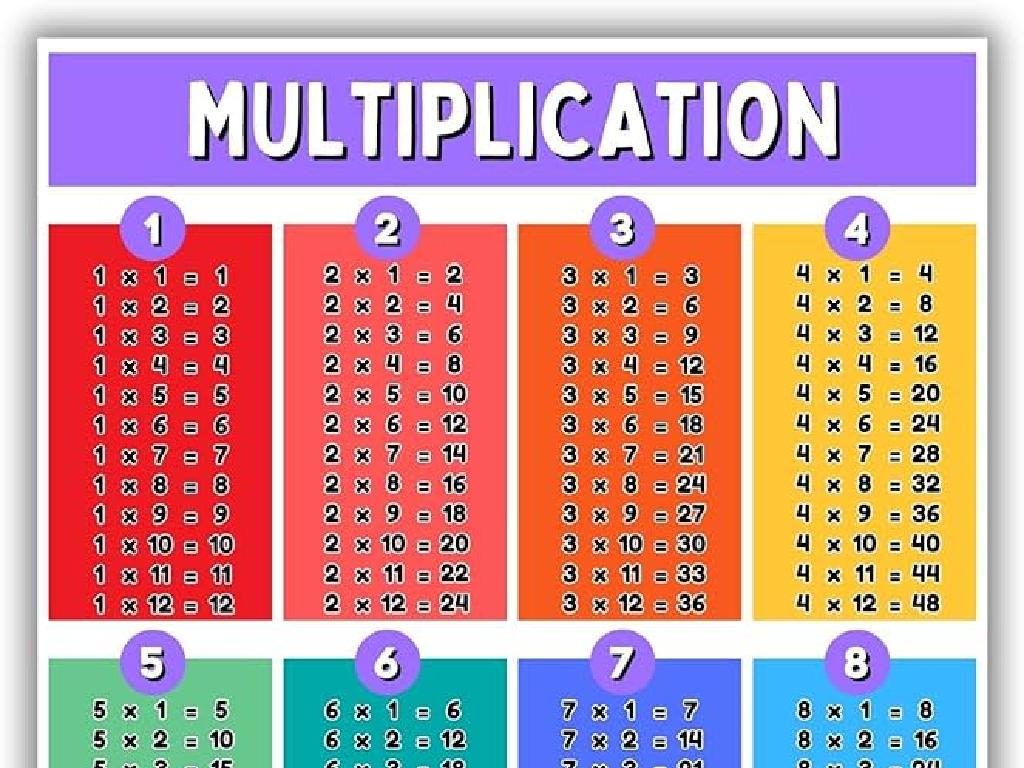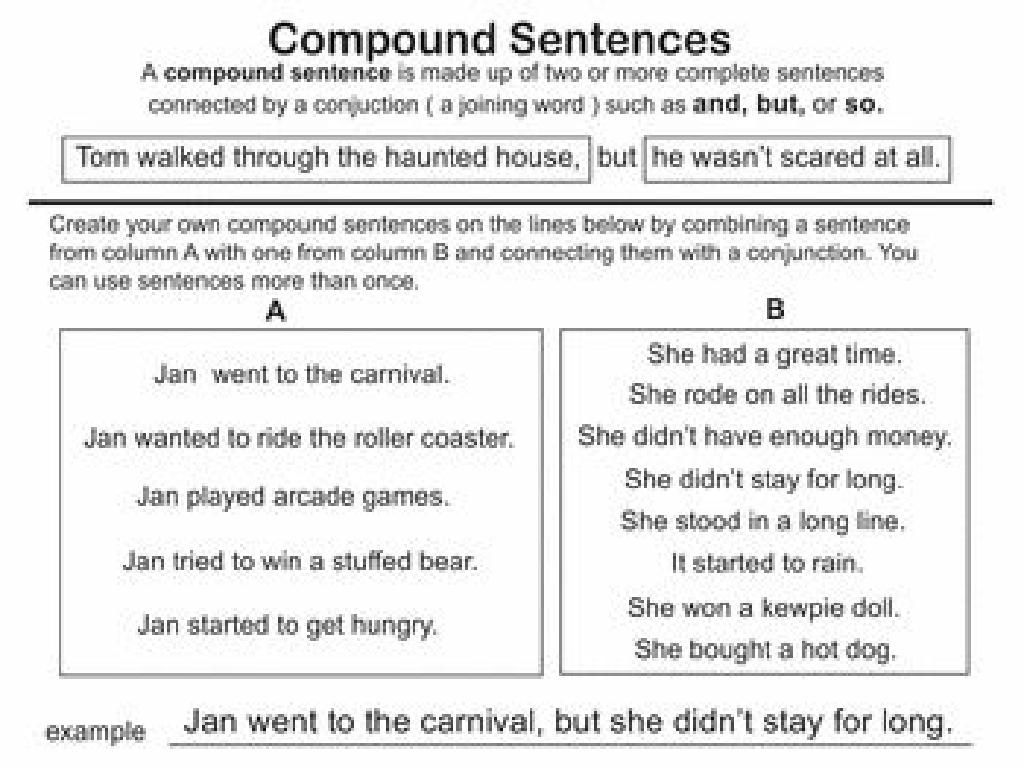Interpret Bar Graphs
Subject: Math
Grade: Third grade
Topic: Data And Graphs
Please LOG IN to download the presentation. Access is available to registered users only.
View More Content
Understanding Bar Graphs
– What is a bar graph?
– A chart that represents data with rectangular bars.
– Parts of a bar graph
– Includes title, labels, bars, and numbers.
– Reading data from bar graphs
– Look at bar height to determine values.
– Interpreting data insights
– Understand what the data tells us.
|
This slide introduces students to the concept of bar graphs, an essential tool for representing and interpreting data visually. Begin by explaining that a bar graph uses bars to show quantities or numbers so that we can quickly compare different categories. Discuss the parts of a bar graph, including the title, which tells us what the graph is about; the labels, which show what each bar represents; the bars themselves, which show the quantity; and the numbers, which indicate the value of each bar. Teach students how to read the height or length of the bars to determine the value they represent. Finally, guide them to interpret what the data means, such as which category is the largest or smallest, and what that might tell us about the topic being graphed. Encourage students to ask questions about the data and what insights they can gain from the graph.
Understanding Bar Graphs
– What is a bar graph?
– A chart with bars representing data
– Bars show data visually
– Height or length of bars shows value
– Compare different groups
– Easy to see which group has more or less
– Bar graphs in everyday life
– Used in weather reports, class surveys, etc.
|
Introduce the concept of a bar graph as a visual tool for representing data. Explain that the height or length of the bars corresponds to the value of the data they represent, making it easy to compare different groups at a glance. Use relatable examples like comparing the amount of rainfall in different months using a weather report bar graph or comparing the number of students who prefer different lunch options in a class survey. This will help students understand the practical applications of bar graphs in everyday life. Encourage students to think of other areas where bar graphs could be useful.
Parts of a Bar Graph
– Graph Title: What’s the graph about?
– Like a book title, it tells us the subject of the graph.
– Categories: Groups we compare
– These are the different things we are looking at, like types of fruit or colors.
– Scale: Units the graph uses
– This helps us count the value of each bar, like steps on a ladder.
– Bars: Show data for each group
– Each bar’s height or length shows us how much or how many.
|
This slide introduces the basic components of a bar graph, which is a visual tool for comparing data across different categories. The title of the graph provides a clear indication of what information the graph is presenting. Categories are the basis for comparison and are typically listed on the x-axis. The scale is a series of evenly spaced numbers that help us measure the data represented by the bars, and it’s usually found on the y-axis. The bars themselves visually represent the data; the height or length of each bar correlates to the data amount. Encourage students to think of a bar graph as a way to tell a story about numbers. Ask them to come up with their own examples of what could be compared using a bar graph.
How to Read a Bar Graph
– Understand the graph’s title
– The title tells us what information the graph is showing.
– Check the scale of the bars
– The scale shows the value each bar represents.
– Compare the bars’ heights
– Taller or longer bars show greater amounts, shorter bars show lesser amounts.
– Analyze which has more or less
– Use the bar lengths to see which category is the largest or smallest.
|
This slide is aimed at teaching third-grade students how to interpret bar graphs. Start by explaining the importance of the title for understanding the context of the data presented. Then, discuss the scale to help them understand how to read the values each bar represents. Encourage students to observe and compare the heights or lengths of the bars to determine which categories have more or less. Use examples like comparing the number of apples to oranges sold in a week or the number of sunny days in different months. This will help them grasp the concept of quantity comparison in a visual format. During the lesson, use simple and relatable examples to ensure comprehension.
Interpreting Bar Graphs
– Identify the highest bar
– The tallest bar shows the category with the most items.
– Find the lowest bar
– The shortest bar shows the category with the fewest items.
– Compare bars for more units
– Count the difference in height between two bars to compare.
– Understand bar graph stories
– Each bar’s height tells us how many items are in each category.
|
This slide aims to teach students how to read and interpret bar graphs. Start by explaining that bar graphs are a way to show information visually and that each bar represents a different category. The height of the bar shows how many units are in that category. Have students practice by identifying which category has the highest and lowest bars, which will help them understand which has the most and least items. Then, guide them to compare the height of different bars to determine how many more units one category has over another. Use real-life examples like comparing the number of apples to oranges sold in a week. Encourage students to tell a story based on what they see in the graph, which will help them connect the data to real-world situations.
Let’s Practice Interpreting Bar Graphs!
– Examine a bar graph as a class
– Answer questions about the graph
– Discuss observations with a classmate
– What do the bars represent? How tall are they?
– Share findings with the class
– After discussing, we’ll share what we learned.
|
This slide is designed to engage students in a hands-on activity to reinforce their understanding of bar graphs. Start by presenting a bar graph to the class and guide them through a series of questions to interpret the data. Encourage students to turn to their neighbors and discuss their observations about the graph, such as which category has the highest or lowest value, or what the height of the bars indicates. After the discussion, ask students to share their findings with the class to ensure everyone has a clear understanding of how to read bar graphs. This activity promotes collaborative learning and helps students to verbalize their thought process.
Create Your Own Bar Graph
– Collect data from classmates
– Fill in your bar graph with data
– Use colors or labels to represent different data points
– Include a title for your graph
– Add categories and a scale
– Categories are the groups you’re comparing, and the scale shows the values
|
This activity is designed to help students apply their knowledge of bar graphs by creating one with real data. Start by having students decide on a topic to gather data about, such as favorite fruits or number of pets. They should then ask their classmates for their data and record the responses. When creating the bar graph, remind students to clearly label the title, categories, and scale. The title should reflect the topic of their data, categories should be the different options from their data collection, and the scale should be consistent to accurately reflect the number of responses. Encourage creativity in their representation but also stress the importance of accuracy and readability. This hands-on activity will reinforce their understanding of bar graphs and how they are used to represent data visually.
Bar Graph Challenge: Group Activity
– Create a bar graph in groups
– Use class survey data for the graph
– Present your graph to the class
– Explain your findings and answer questions
– Share what the graph indicates about our survey and be ready for a class discussion
|
This activity is designed to foster teamwork and apply the concepts of bar graphs in a practical setting. Divide the class into small groups and have them conduct a simple survey among themselves on a topic of interest. Each group will then use the collected data to create a bar graph. Encourage creativity in the graph’s design but ensure the data is represented accurately. After creating their graphs, each group will present their findings to the class, explaining what the graph shows about the survey data. They should be prepared to answer questions from their classmates, which will help reinforce their understanding of interpreting bar graphs. Possible survey topics could include favorite fruits, number of siblings, or preferred hobbies. This will make the data relatable and engaging for the students.






